Southern Africa - South Africa, Botswana, Zimbabwe, Zambia, Namibia
August 23 - September 15, 2016
Part One - Okavango Delta, Botswana
Page Two

African or Cape Buffalo. They are widely regarded as dangerous
animals, as they gore and kill over 200 people every year.

The adult buffalo's horns are its characteristic feature;
it has a fused base, forming a continuous bone shield called
a "boss."

Note the yellow-billed oxpecker on the buffalo.
It is dull brown in color with a bright yellow bill with
a red tip. The eyes are red. They are gregarious and
several will ride on the backs of large mammals. They
eat insects and ticks. Often especially found on hippos and
buffalo.
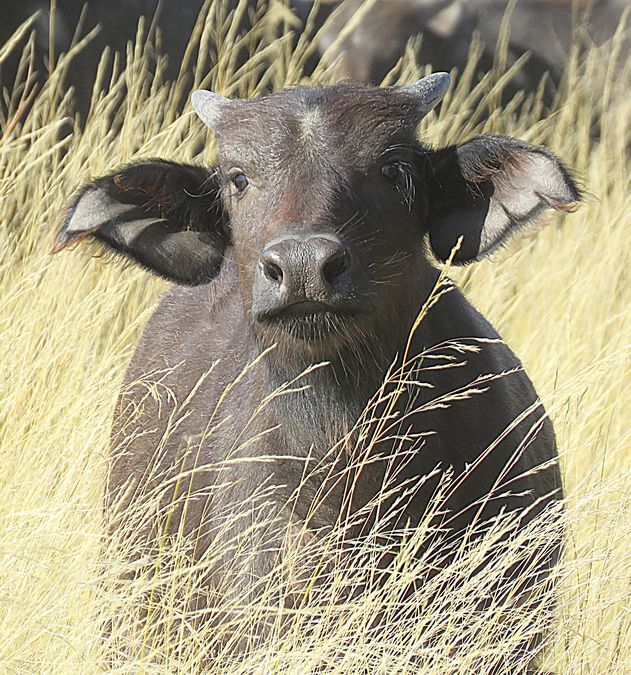
A buffalo calf. While calves are vulnerable to predators
like lions and hyena, the buffalo herd gives them good
protection.

Buffaloes are non-territorial and may congregate in herds of
several hundred. There were a huge number in this group,
far too many for me to estimate the number. They usually
keep to shade much of the day.

Two female lions relaxing at the base of a termite mound.


The German researcher working on the lion saving project
emailed me after I got home the age of these lions. He
said, while their noses are still bright pink (a sign of sub-adult
age) and both still have very prominent juvenile spot patterns
on their legs and body (also indicating young age), the
development of their skulls and relative body size clearly
indicate young adult age, approx. 3 years - 4 years old.
These are young adult females, pre-breeding age.
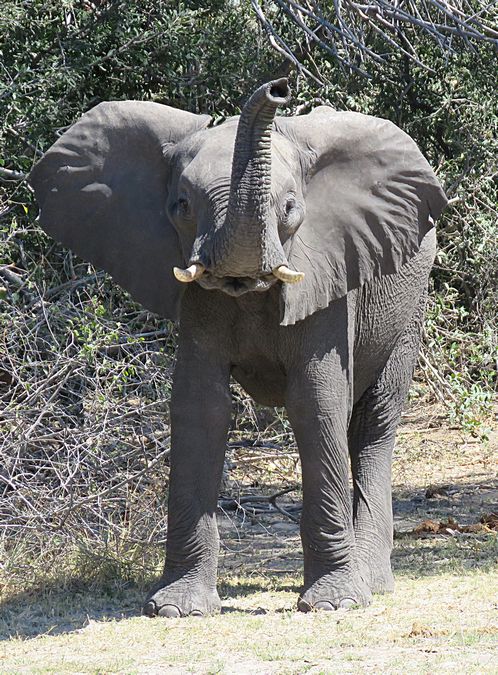
An elephant that did not like how close we were

African fish eagle - a large, rust-brown eagle with a
snow-white head and chest. It is seen around waterways.
They often perch in tall trees, swooping down to grab fish from
the water or to take a meal from another bird.

Hippopotamus - huge aquatic herbivore with an almost
hairless body and small ears and eyes. The broad mouth
has tusk-like teeth. They stay in water by day, when only their
ears, eyes and nostrils protrude above the surface. They are usually
in small herds of 10 to 12.
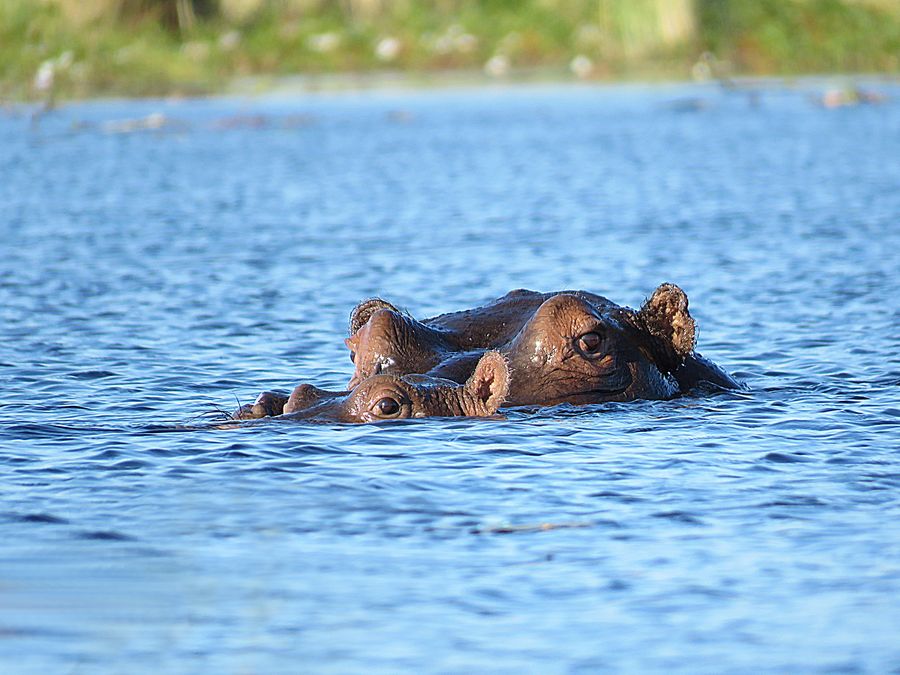
Mom and baby hippo

Hippos come on to land after dark to feed on grass.
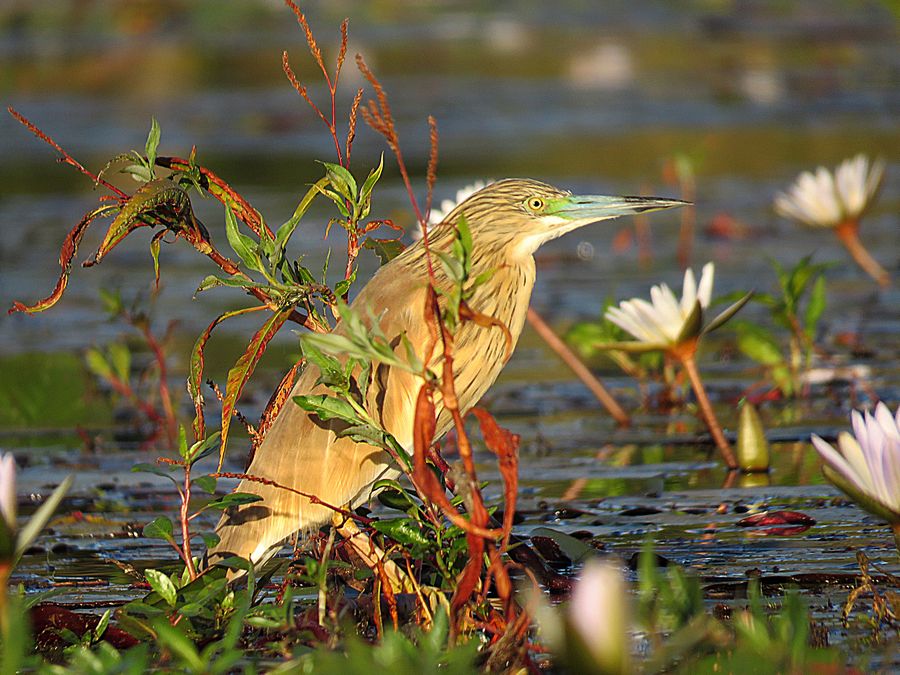
Squacco Heron - Usually seen alone in vegetated fringes
of channels and lagoons, or on floodplains. Feeds on
frogs and insects.
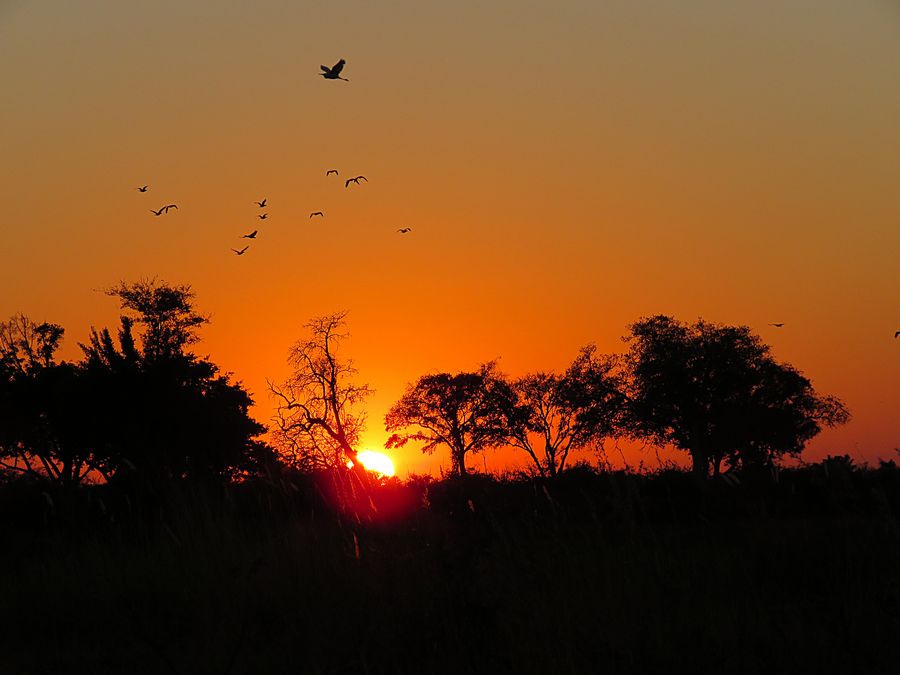
Sunrise August 27 - while heading out for an early morning
game drive. Early morning game drives were cold, so multiple
layers were needed, plus they provided blankets. By about 10 AM,
it warmed up and became shirt sleeve weather.
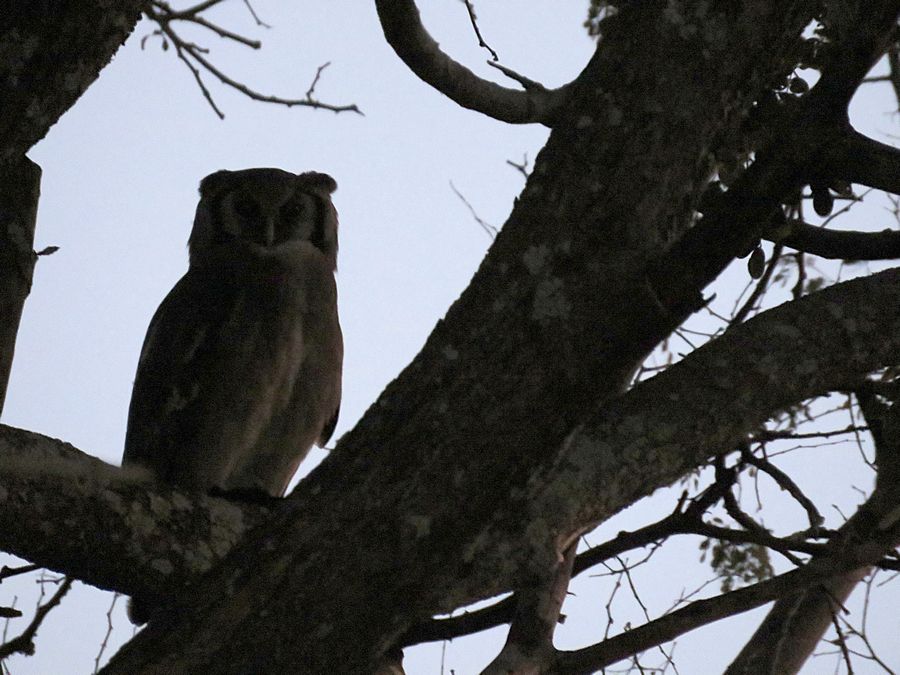
Giant eagle owl at sunrise. The ear tufts create a cat-like
silhouette. They eat smaller mammals and birds. Grey-brown with
a pale face rimmed in black.

A mother lion on the left; her daughter on the right.
The German researcher was on this wildlife viewing
drive and has emailed me that he aged this mother
and daughter that we observed together. The young female
is about 1.5-2.5 years old, while the mother is about 5-6
years of age.

These lions were also on a termite mound, probably to
better look for prey, since the mounds are the highest thing around.
The daughter yawned several times.

Closeup of the daughter

The daughter decided to move to another termite mound
nearby. This photo helps show how close we were able to
get to the lions. It was eerie. Another safari vehicle is in the
photo. Our guides told us not to talk and not to stand up in
the vehicle, which would enable the lions to distinguish us
from the vehicle.

The daughter at the other termite mound.
Mound-building termites are a group of termite species
that live in mounds. Most of the mounds are found in
well drained areas. Termite mounds usually outlive the
colonies themselves.

The eyes of the lion. She eventually ambled back to her
mom at the other termite mound.
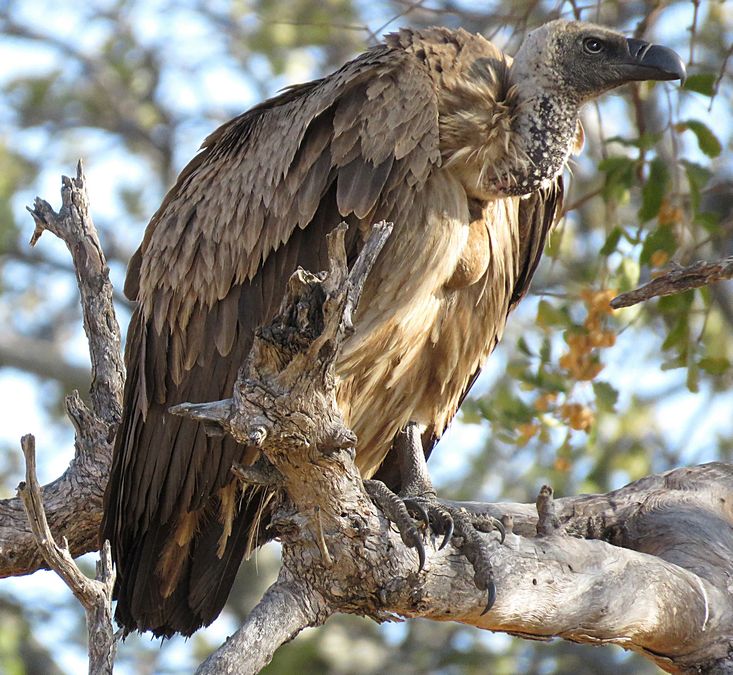
Closeup of a white-backed vulture
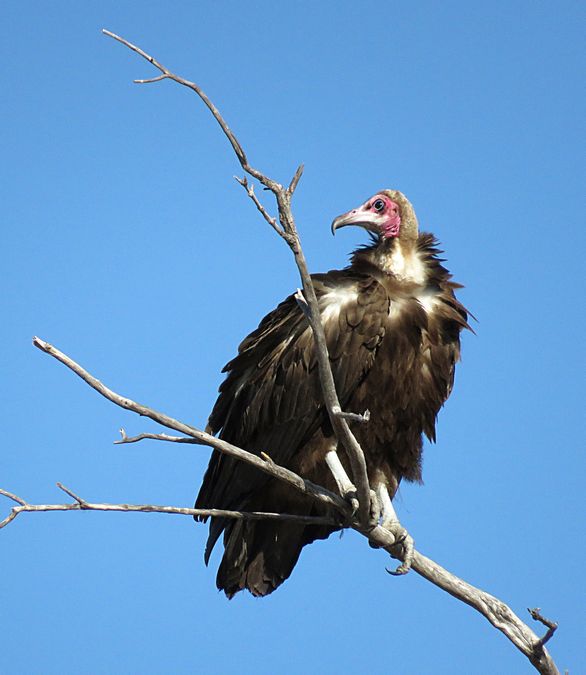
Lappet-faced vulture - a large dark brown vulture with
a pink face and large bill. They dominate other vultures
at carcasses.

Giraffe - feeds on leaves beyond reach of other browsers.
Likes acacia trees during the summer but switches to mopane
trees and evergreen trees in the dry season, which this was.
Non-territorial. The small horns of males are bald on their tips.
Female horns are tufted. Individuals become darker as they age.

Aging adults and calves are vulnerable to lions and hyenas.

South African giraffe - Notice giraffe's teeth
The long prehensile tongue is used to pull pods and leaves into
the mouth which are then stripped from the stems with the
incisor teeth.
Link to Page Three - Okavango Delta
Pat's Home Page